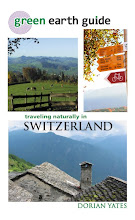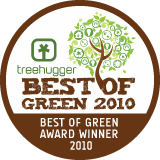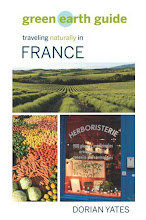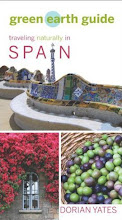The Wanderweg (W’s are pronounced like V’s in German) is the term used for the more than 31,000 miles of walking trails in Switzerland. Walking the Wanderweg is a common Swiss past-time and it is quite usual to see Swiss hikers of all ages on the trains heading to or from their hikes with rucksacks and walking sticks in hand.
The Wanderweg is posted with orange signs to keep you on course and every so often there will be directional signs with estimated time and kilometer distances. Consider that while many of the routes on the Wanderweg are roads of various sizes, there are also numerous stretches that are mere foot- or sheepworn paths through a field or pasture, or even a lawn!
Take your time. Never be in a rush when starting out on a new Wanderweg route. Much of the fun and charm have to do with the adventure of making your way through the beautiful landscape. Another wonderful aspect of the Wanderweg is that it is not just for recreation and sightseeing. The Wanderweg is practical. If you have figured out your route—you can walk to your destination be it clinic, store, attraction—no need for cars, or public transportation. Or for variety you can take advantage of all options, walking one direction and taking public transport for your return, or walking both ways, but taking different routes. A word to the wise—be prepared for steep walking—both uphill and downhill—Swiss walking is not for the weak-kneed.
One of the pilgrimage-walking routes to Santiago de Compostela (St. James Way or Jacobsweg in German) in Spain goes through the Fribourg area of Switzerland. See the Swiss site for Santiago routes in English.
Excerpted from the Green Earth Guide: Traveling Naturally in Switzerland
Monday, January 31, 2011
Wednesday, January 19, 2011
Go Really Green—Camping in Switzerland
When the weather is amenable, camping is an inexpensive and environmental option. In Switzerland there are numerous campgrounds, but camping outside of designated camping areas is forbidden (verboten).
Two Web sites provide campsite information for Switzerland, available in German and English and can be searched by region: www.camping.ch and www.swisscamps.ch. The Swiss Camps site lists thirteen campsites that rent tents (tent is zelte in German). A few sites offer regional camping information—for the Valais area www.campings.ch; for the Berner Oberland area www.camping-bo.ch; and the Interlaken area www.campinginterlaken.ch
A cross between camping and hosteling is Schlaf im Stroh (Sleep on Straw), for which you need a sleeping bag and a desire for a farm experience. Some of the two hundred and forty farms participating in this program also offer camping, guest rooms or dorm-style accommodations. Prices range from 20 to 30 CHF/person/night. The Web site, offered in German, French and English, is searchable by region using a map or list; Web: www.abenteuer-stroh.ch
There are hundreds of alpine “huts” across the Swiss Alps. Short and long term hikers can take advantage of these—most are open only in the summer and early fall, while a few are open in winter and early spring. Often local food is served—from homemade butter, jams and breads to vegetables and traditional muesli. Founded in 1863, The Swiss Alpine Club manages the three hundred plus huts. Visit www.sac-cas.ch for a map showing hut locations. The site is in German and French, but easily searchable under French “Chercher une cabane” or German “Hütte suchen”—click on the map and then click on any red “hut” dot for more information about that specific hut location.
Whether camping or not, take advantage of the remarkable walking trails, the Wanderweg, that wind through Switzerland.
Two Web sites provide campsite information for Switzerland, available in German and English and can be searched by region: www.camping.ch and www.swisscamps.ch. The Swiss Camps site lists thirteen campsites that rent tents (tent is zelte in German). A few sites offer regional camping information—for the Valais area www.campings.ch; for the Berner Oberland area www.camping-bo.ch; and the Interlaken area www.campinginterlaken.ch
A cross between camping and hosteling is Schlaf im Stroh (Sleep on Straw), for which you need a sleeping bag and a desire for a farm experience. Some of the two hundred and forty farms participating in this program also offer camping, guest rooms or dorm-style accommodations. Prices range from 20 to 30 CHF/person/night. The Web site, offered in German, French and English, is searchable by region using a map or list; Web: www.abenteuer-stroh.ch
There are hundreds of alpine “huts” across the Swiss Alps. Short and long term hikers can take advantage of these—most are open only in the summer and early fall, while a few are open in winter and early spring. Often local food is served—from homemade butter, jams and breads to vegetables and traditional muesli. Founded in 1863, The Swiss Alpine Club manages the three hundred plus huts. Visit www.sac-cas.ch for a map showing hut locations. The site is in German and French, but easily searchable under French “Chercher une cabane” or German “Hütte suchen”—click on the map and then click on any red “hut” dot for more information about that specific hut location.
Whether camping or not, take advantage of the remarkable walking trails, the Wanderweg, that wind through Switzerland.
Monday, January 10, 2011
Slow Food Spain
Last week, "alive" food. This week slow….. and not as in eating snails (even though that is the Slow Food logo) and sloths, but rather, slow as in the promotion of whole food meals prepared fresh from local and seasonal foods.
In Spain, the Slow Food Farm-to-Table project, called Km 0, certifies restaurants serving local, organic and indigenous foods that have come from farms less than 100 km (62 miles) away. Close to sixty restaurants around Spain have been recognized as Km 0. The highest concentration of Km 0 restaurants are in the Catalonia and Basque regions. The rest are scattered around the country. A couple are listed specifically in the Green Earth Guide to Spain—Kimpira in Valencia and Gaia in Sevilla.
Founded in Italy twenty-two years ago, the Slow Food movement mission is five-fold—to defend food biodiversity, safeguard the environment, advocate sustainable agriculture, protect small producers and their communities, and foster the gastronomic traditions of the world. Within that broad purpose, Slow Food has many projects including Farm to Table/Km 0 and the Ark of Taste. For restaurants in Spain to be accepted in the Km 0 program they must serve at least 5 dishes on their menu made avoiding GMO foods and with a minimum of 40% ingredients from local producers and 60% from foods that are organic or identified in the Ark of Taste project. The Slow Food Foundation for Biodiversity Ark of Taste project catalogs and promotes indigenous foods at risk of extinction. More than 900 foods from fifty countries have been identified so far. In Spain this includes seventy-nine foods—some olive oils, olives, fruits, vegetables, herbs, cheeses, meat, fish, grains and wines. Restaurants are reviewed annually to make sure they are maintaining compliance with the Km 0 requirements.
Thanks to Slow Food España for administrating the Km 0 project and for providing the list of Km 0 participating restaurants. To find the Spanish restaurants approved as Km 0 visit the new 2010-2011 list of restaurants, organized alphabetically by city:
http://cocineros.slowfood.es/2010/12/09/restaurantes-km-0-edicion-2010-2011/
In Spain, the Slow Food Farm-to-Table project, called Km 0, certifies restaurants serving local, organic and indigenous foods that have come from farms less than 100 km (62 miles) away. Close to sixty restaurants around Spain have been recognized as Km 0. The highest concentration of Km 0 restaurants are in the Catalonia and Basque regions. The rest are scattered around the country. A couple are listed specifically in the Green Earth Guide to Spain—Kimpira in Valencia and Gaia in Sevilla.
Founded in Italy twenty-two years ago, the Slow Food movement mission is five-fold—to defend food biodiversity, safeguard the environment, advocate sustainable agriculture, protect small producers and their communities, and foster the gastronomic traditions of the world. Within that broad purpose, Slow Food has many projects including Farm to Table/Km 0 and the Ark of Taste. For restaurants in Spain to be accepted in the Km 0 program they must serve at least 5 dishes on their menu made avoiding GMO foods and with a minimum of 40% ingredients from local producers and 60% from foods that are organic or identified in the Ark of Taste project. The Slow Food Foundation for Biodiversity Ark of Taste project catalogs and promotes indigenous foods at risk of extinction. More than 900 foods from fifty countries have been identified so far. In Spain this includes seventy-nine foods—some olive oils, olives, fruits, vegetables, herbs, cheeses, meat, fish, grains and wines. Restaurants are reviewed annually to make sure they are maintaining compliance with the Km 0 requirements.
Thanks to Slow Food España for administrating the Km 0 project and for providing the list of Km 0 participating restaurants. To find the Spanish restaurants approved as Km 0 visit the new 2010-2011 list of restaurants, organized alphabetically by city:
http://cocineros.slowfood.es/2010/12/09/restaurantes-km-0-edicion-2010-2011/
Sunday, January 2, 2011
Traveling Raw

“It’s alive!” my teenage son jokingly howled as he took a bite of food we were sampling at a restaurant recently. There was no monster from the black lagoon or flies in his soup, but rather a medley of “raw” dishes prepared to gourmet standards at New York City’s One Lucky Duck café near Union Square.
"Raw food" usually conjures a pile of uncooked vegetables—or "rabbit food" as some people like to refer to it—but that evening we were eating tortillas, spicy Thai wraps, lasagna, chocolate ganache and almond-buttercup ice cream. Our meal was varied in its flavors, textures, scents and presentation. Other than the Mediterranean salad and the chunks of avocado in the delicious guacamole that came with our tortillas, nothing we ate could have been remotely described as “rabbit food” (although I have nothing against “rabbit food.”)
While the term "raw" provides a short, quick description of uncooked food, it is not the most accurate term for the burgeoning world of foods prepared below 118ºF. The term "live" is much more apt as it properly describes the important elements of this style of eating, where the enzymes, nutrients and beneficial bacteria of foods are kept vital and accessible when prepared below temperatures that destroy these essential compounds.
Live-food is more than salads and juices. Live-food involves understanding ways to make food more digestible and assimilable. This means knowing how to unlock nutrients and generate healthy fermentation. Nuts, for instance, become much more digestible when raw nuts (those that are not roasted) are soaked for one to four hours. Legumes, such as lentils, are best soaked and slightly sprouted, as are seeds—making them "live" as if for germination.
Many cultures use natural fermentation as a food-storage tool as well as to create healthy foods eaten daily such as traditional sauerkraut or kimchi—a term referring to countless variations of fermented vegetables and spices, considered a traditional, staple dish in Korea. Live-food chefs and devotees have developed a variety of techniques and recipes which successfully transform piles of raw vegetables, fruits, nuts and seeds into gourmet meals, both delicious and satisfying.
Skeptics might question the ability of live-foods to satiate, but research has found that live-foods nourish the body more efficiently than their equivalent in cooked food. For example studies have shown that soaking and sprouting can increase the nutrient content of beans, nuts and seeds by 300 to 600 times.
In addition to increased nutrients, live-food meals are usually free of common allergens such as gluten, eggs and cow-dairy. However people with nut allergies might find the diet challenging since many live-food recipes rely on nuts. There are variations on the live-food theme and not all live-food advocates are vegan (animal-product-free). You can find live-food enthusiasts who consume raw fish, raw meat, and cheeses and milk from unpasteurized milk, but many live-foodies stay clear of animal products and so the diet tends to be suitable for vegans and vegetarians.
Live or raw food is not a new concept. Cultures all over the world utilize aspects of live-food production and have done so for millennia including the aromatic (some would say stinky) cheeses made from raw milk in France and other countries, Korea’s kimchi, traditional kefir (fermented milk) in Eastern Europe and Middle Eastern countries, Himalayan gundruk (fermented vegetable leaves), countless local, small-batch fermented beverages around the globe from beers to kombucha (fermented tea), and of course the bounty of fresh fruits and vegetables in tropical climates. Some of the basic components of the health-acclaimed Mediterranean diet involve live-food with its emphasis on local, fresh fruits and vegetables, olives and extra virgin olive oil.
In the United States live-food has been promoted for decades by health enthusiasts such as Ann Wigmore and Max Gerson who have advocated eating live-food as a form of cancer prevention and treatment. Other live-food proponents past and present include Weston Price, DDS, Norman Walker, Gabriel Cousens, MD, Victoria Boutenko, Donna Gates, David Wolfe, and numerous brilliant chefs. Naturally detoxifying, some health benefits that have been associated with live-food diets include weight loss, increased energy, reduction of inflammation, and longevity.
Before you start experimenting with live-food cuisine on your own I suggest going to one of the restaurants listed below to see what a live-food meal can be like. You might be surprised at the fresh, clean sensations, the spectrum of flavors and the lack of post-meal gut distention. That said, be forewarned that meals in restaurants specializing in live-food are not cheap. Live-food requires a huge amount of prep time and uses perishable foods including avocados (big in live-food menus). Anyone who has tried to keep a bunch of avocados on hand to ripen knows how challenging and potentially expensive that can be.
If you are experimenting at home be apprised that live-food represents an utterly new way of preparing food that takes a bit of adjustment. It is not simply replacing conventional products with organic, or processed with unprocessed. Your kitchen world shifts to soaking (a large part of raw food prep) and planning ahead (not a bad thing). Equipment needs change from pots and pans to blenders, food processors and a dehydrator—the last being the most foreign to many kitchens and cooks.
You will also have a radically different grocery list. Stocking the pantry will be expensive at first, but once you have the basic foods, you will find it less expensive than meat-based diets or processed foods. The most challenging is keeping fresh greens on hand in the winter. Kale is one of the healthiest and most economical, lasting a fairly long time in the fridge. Easy live-food dishes to begin with are salads, smoothies (made with fresh, raw ingredients only—not mixes), and blender-made soups.
Vitamixers are the gold standard for live-food preparation but are expensive running in the $500 range. If you already own a good blender or food processor those will work. An electric coffee grinder, such as the compact model made by Braun, is good to have on hand for grinding seeds. When looking for a dehydrator—if you get that far—the key is to look for one with adjustable temperature controls and a thermostat since you want to keep items below 118 degrees. Some dehydrators have no controls and dehydrate at temperatures too high for live-food preservation. The Excalibur is the most popular dehydrator among live-food chefs with a price tag around $200. A less expensive option is made by Nesco for around $70.00.
Chefs and restaurants devoted to live-food menus are few and far between, at least outside of California and Hawaii, so travelers trying to adhere to a live-food diet may find it challenging when on the road. Even large cities like New York have less than a handful of restaurants specializing in live-foods. See the resources at the end for some of the raw food restaurants in the United States and the UK.
Entering the realm of live-foods can be exciting and health rewarding, but also frustrating and challenging. While many jump in with both feet this can be overwhelming unless you are fully prepared with the proper basic foods, equipment and determined commitment. For others it is helpful to go easy and gently, building your live-food repertoire, discovering the dishes you love and hate, and listening to your body. This last being the most important—listen to your body, unearth what you hunger for and what truly nourishes you.
Restaurants
Boston area
Prana Café serves all raw, organic, vegan foods. Prana, 292 Centre St., Newton Corner, MA; Tel: 617-527-7726; Web: www.eatatprana.com; open every day from 9 am to 4 pm, open for dinner Sunday to Thursday from 5 pm to 9 pm, Friday and Saturday from 5 to 10 pm.
The Organic Garden Café has a mostly raw/live-food menu. Organic Garden Cafe, 298 Cabot St, Beverly, MA 01915; Web: www.organicgardencafe.com;open Tuesday to Thursday from 9 am to 7:30 pm, Friday and Saturday from 9 am to 8:30 pm, and Sunday 9 am to 7 pm.
The Revitalize Café serves all raw, vegan dishes using locally grown produce. The café does not use products that contain gluten, soy, refined sugars, honey, grains, mushrooms or animal products. Dishes available to eat in or as take-out. Revitalize Café, Tannery Marketplace, 50 Water St., Newburyport, MA; Tel: 978-462-0639; Web: www.revitalivecafe.com; open 7 days a week, Monday to Saturday from 9 am to 7 pm, Sunday from 12 noon to 5 pm.
Experienced live-foodies will be sad to learn that Alissa Cohen’s Grezzo live-food restaurants in Boston and Newburyport are now closed.
Connecticut
Catch a Healthy Habit serves raw, vegan, organic, gluten-free foods. Catch a Healthy Habit Café, 39 Unquowa Road, Fairfield, CT 06824; Tel: 203-292-8190; Web: www.catchahealthyhabit.com; open Monday and Tuesday from 8 am to 3 pm, Wednesday and Friday from 8 am to 7 pm, Thursday 8 am to 6:30 pm, Saturday 9 am to 7 pm, and Sunday 11 am to 6 pm.
Florida
Help Yourself is an extremely environmentally conscious restaurant serving mostly, but not exclusively, raw foods. They make excellent juices and use local coconuts. On Mondays they host an organic food market. Help Yourself, 829 Fleming Street, Key West, FL 33040; Tel: 305-296-7766; Web: www.helpyourselffoods.com; open every day from 8 am to 4 pm with an organic market on Mondays from noon to 7 pm.
Los Angeles
Planet Raw is an exclusively live-food restaurant using all organic ingredients with the exception of its Thai coconuts. It prides itself on its sustainability practices including the use of biodegradable packaging, beeswax candles, clay-painted, non-toxic walls, and environmentally-friendly cleaning products. Planet Raw, 609 Broadway, Santa Monica, CA, Tel: 310-587-1552; Web: www.planetraw.com; open 365 days a year, Sunday to Thursday from 9 am to 11 pm, Friday and Saturday from 9 am to 12 midnight.
New York City
One Lucky Duck and Pure Food and Wine are partner restaurants sharing a kitchen. Pure Food and Wine is a fancy, expensive restaurant serving lunch and dinner. One Lucky Duck, around the corner from Pure Food and Wine, is the funky sister serving desserts, smoothies, juices, and all lunch menu items from Pure Food and Wine. All dishes at One Lucky Duck are available to eat-in or take-out. Pure Food and Wine, 54 Irving Place (at 17th street, 1 block east of Union Sq.), NYC 10003; Tel: 212-477 1010; Web: www.oneluckyduck.com/purefoodandwine; open for lunch from 12 noon to 4 pm, dinner from 5:30 to 11 pm.
One Lucky Duck, 125 E. 17 St, NYC 10003; Tel: 212-477-7151; Web: www.oneluckyduck.com; open 7 days a week 9 am to 11 pm. Also at Chelsea Market, 425 W. 15 St (or enter on 9th Ave.), NYC; open Monday to Friday from 10 am to 9pm, Saturday 10 am to 8 pm, Sunday 10 am to 7 pm.
Caravan of Dreams serves organic, natural meals and half the menu is live-food. Caravan of Dreams, 405 East 6th St. (at 1st Ave), NYC; Tel: 212-254-1613; Web: www.caravanofdreams.net/#/Restaurant; open Sunday to Friday from 11 am to 11 pm, Saturday open until midnight—lunch and brunch are served until 5 pm.
Rockin’ Raw serves live, organic, vegan food employing a variety of cuisines including Peruvian and Creole. Rockin’ Raw, 178 North 8 Street, Brooklyn, NY 11211; Tel: 718-599-9333; Web: www.rockinraw.com; open Tuesday to Thursday from 12 noon to 10 pm, Friday and Saturday from 12 noon to 11 pm, and Sunday from 12 noon to 10 pm.
Texas
Beets Café serves all raw dishes for breakfast, lunch and dinner. Beets Living Foods Café, 5th Street Commons, 1611 W. 5th St., Suite 165, Austin, TX 78703; Tel: 512-477-2338; Web: www.beetscafe.com; open Monday to Wednesday from 8 am to 8 pm, Thursday and Friday 8 am to 9 pm, and Saturday 10 am to 9 pm.
Vermont
Vermont Fiddleheads Café serves smoothies, juices, sandwiches, desserts, kimchi and other fermented foods, that are all vegan, organic and local when possible, with free WiFi available. Vermont Fiddleheads Cafe, 18 Worcester Village Road, Worcester, VT; Tel: 802-223-2111, Web: www.vt-fiddle.com/rawfood/fiddle_heads_cafe.php; open Open Tuesday to Friday 12 noon to 6 pm, Saturday 12 noon to 4 pm.
London, England
Vantra Restaurant serves mostly, but not exclusively, raw foods. It is 100% vegan and most ingredients are organic. Vantra, 11-13 Soho Street, W1D 3DJ, London, UK (near the Tottenham Court Rd tube/subway station); Tel: (011 44) 20-7287-6060; Web: www.vantra.co.uk; open Monday to Saturday from 12 noon to 11 pm, Sunday from 12 noon to 8 pm.
Vitao Restaurant serves mostly, but not exclusively, raw foods. It is 100% vegan and most ingredients are organic. Vitao, 74 Wardour Street, W1F 0TE, London (near the Leicester Square tube/subway station); Tel: (011 44) 20 7734-8986; Web: www.vitaorganic.co.uk; open Monday to Saturday from 12 noon to 11 pm, Sunday from 12 noon to 9 pm.
The InSpiral Restaurant serves mostly, but not exclusively, raw foods. It is 100% vegan and most ingredients are organic, including 100% organic cocktails at the bar. InSpiral, 250 Camden High Street, NW1 8QS, London (Camden Town tube/subway); Tel: (011 44) 20 7428-5875; Web: www.inspiralled.net; open Monday to Thursday 10 am to 10 pm, Friday and Saturday 10 am to 2 am, Sunday 10 am to 11:30 pm.
Raw Food Health Centers
Tree of Life Rejuvenation Center, Dr. Gabriel Cousens;
Web: http://www.treeoflife.nu/home-index/
Hippocrates Health Institute, founded by Ann Wigmore & Viktoras Kulvinskas;
Web: www.hippocratesinst.org
Raw Resources
Supercharge Me—The Movie, by Jenna Norwood; Web: www.jennanorwood.com
Ani’s Raw Food Essentials: Recipes and Techniques for Mastering the Art of Live Food, by Ani Phyo (Da Capo Lifelong Books 2010)
The Body Ecology Diet: Recovering Your Health and Rebuilding Your Immunity, by Donna Gates (Body Ecology 2006), Web: http://bodyecology.com/
Green for Life, by Victoria Boutenko (North Atlantic Books 2010); Also by Victoria Boutenko: 12 Steps to Raw Foods; and The Green Smoothie Revolution
Living Raw Food: Get the Glow with More Recipes from Pure Food and Wine, by Matthew Kenney & Sarma Melngallis (William Morrow 2009)
Rainbow Green Live-Food Cuisine, by Gabriel Cousens, MD and the Tree of Life Café Chefs (North Atlantic Books 2003)
Raw: The Uncook Book: New Vegetarian Food for Life, by Juliano Brotman and Erika Lenkert (Regan Books, 1999)
Raw Food/Real World: 100 Recipes to Get the Glow, by Matthew Kenney & Sarma Melngallis (William Morrow 2005)
Also by Matthew Kenney, Everyday Raw; Entertaining in the Raw; Everyday Raw Desserts
The Sunfood Diet Success System (North Atlantic Books 2008); Superfoods (North Atlantic Books 2009), both by David Wolfe; Web: Web: www.davidwolfe.com
Subscribe to:
Posts (Atom)

















